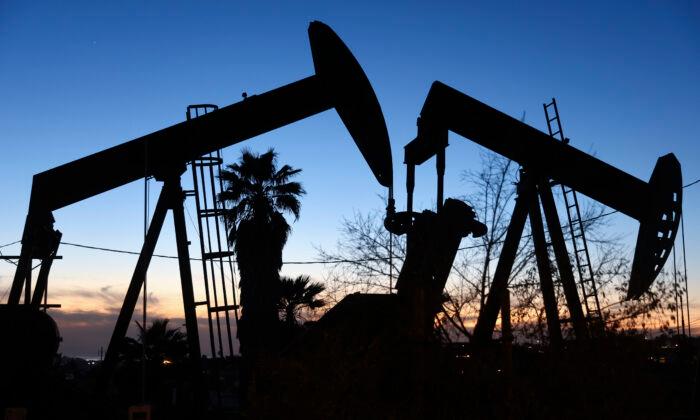The business activity index, a measurement of conditions facing energy companies in the region, fell to 46.0 in the July-to-September period from the second quarter’s record of 57.7.
Executives at exploration and production (E&P) firms noted that crude oil and natural gas production increased at a solid rate of 31.7 and 35.6, respectively.
Costs continue to remain elevated for the seventh consecutive quarter as the index for input costs clocked in at 83.9. None of the 58 oilfield services firms that participated in the regional central bank’s quarterly survey recorded a drop in input costs. In addition, the indexes for finding and development costs and lease operating expenses for E&P entities eased slightly to 64.7 and 70.2, respectively.
“Oilfield service inflation has increased, uncertainty has increased and oil prices have decreased. This is a recipe for lower to flat industry spending in 2023,” one E&P executive stated.

Supply chain disruptions and labor shortages continue to be enormous challenges for the oil and gas industry. Supplier delivery times still lagged and remained above the industry average. While there was robust growth in employment, wages, and hours executives noted that it’s difficult to attract talent.
Businesses are struggling to obtain critical parts for hydraulic fracturing, drilling rigs, and other crucial tools. But executives revealed that they also find it hard to hire oilfield service workers and truckers amid limited worker availability.
“The labor issue will provide a restraint on any major increase in oil and gas production for the domestic market―this, as well as the regulations from the present administration as they chase green energy policy,” an E&P executive remarked in the report.
“The biggest challenge for us is adding employees. We are trying to add qualified staff, with little success, and that will negatively impact growth. Second is the rising cost of services,” another executive noted.
Overall, optimism diminished last quarter, with the outlook uncertainty index soaring to 35.7 from 12.4. At the same time, there was a divergence of uncertainty among oilfield services firms and E&P organizations: 17.8 compared to 45.2.
“The uncertainty over future inflation and/or a recession weighs heavily upon us,” one E&P executive commented in the survey.
But one oil and gas support services firm executive suggested that President Joe Biden and his administration are against the energy industry.
“The administration is holding us back, with no love of oil,” the person said.
When it comes to crude oil and natural gas prices, opinions were mixed. Some suggest that White House policies and a paucity of capital for E&P firms could be “wonderful news for long-term prices.” Others contend that global economic uncertainty and recession fears could send prices lower.
‘Phasing Out the Use of Oil’
This week, the Biden administration proposed new rules on the national oil and gas sector.“This proposed rule will bring our regulations in line with technological advances that industry has made in the decades since the BLM’s rules were first put in place, while providing a fair return to taxpayers,” said Interior Secretary Deb Haaland in a statement.
Critics assert that this is another example of the administration’s war on the oil and gas industry. But John Kirby, the National Security Council Coordinator for Strategic Communications, pushed back against some of these criticisms.
Since the 2020 presidential election, Biden has vowed to end the fossil fuel industry, announcing in November 2020 that his administration would be “banning new oil and gas permitting on public lands and waters” to stop climate change.
SPR Drawdown
For the week ending Nov. 25, crude oil inventories cratered 12.58 million barrels, higher than the market estimate of 2.758 million barrels, EIA figures show (pdf). Gasoline inventories surged at a higher-than-expected rate of 2.769 million barrels. Distillate stocks increased by 3.547 million barrels, while heating oil supplies fell by 729,000 barrels.January West Texas Intermediate crude oil futures surged 2.6 percent to above $80 a barrel on Nov. 30 on the New York Mercantile Exchange. Year-to-date, U.S. crude prices are up about 7 percent.





